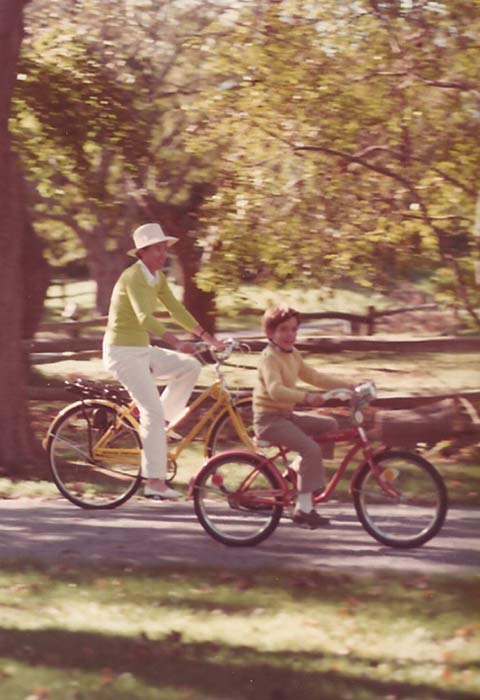
Architect and designer David Netto learned everything he knows about entertaining and design from his mom, Kate Netto.
On entertaining…
“I had a wonderful mother, Kate, and she hated to entertain. Not that she was a recluse, she just didn’t like to cook and arrange flowers and do all the things most of us associate with being a good hostess. As one chic New York lady said to me when I was seated next to her at a party (with a hint of admiration in her voice), ‘I know your mother. She keeps to herself, doesn’t she?’
I was always trying to get her out, get her dressed up and part of the action. In the mid-90s there was a big party for the centennial of the East Hampton Public Library, and I knew this was a perfect chance because she loved that institution. I had visions of our A-list table, of all the players we would invite to sit with us, and how our lives were going to change that night and the glittering future would begin, which I could read all about in W.
After a while I called her to ask who we were inviting. She told me she had given the table to the library to bring staff members who otherwise wouldn’t have been able to attend, and the best part was she said, ‘Now we don’t have to go to some screeching party.’
The lesson: There are many ways to be a great hostess.”
On décor…
“My mom was not terribly interested in making an impression with her
decorating — she left that to my father and me — but she did give me one
lesson in style which — the more I learn about design, the more I appreciate.
It was this: Anything I ever gave her, she kept — and made a part of her room. When you were in her environment you had a feeling for the value she placed on love and relationships over all else. A small sculpture of a tennis player I bought her when I was 10 was on her bureau for the rest of her life…. An Indian wallet I had stitched in camp she not only displayed but used, as a change purse…. The books I gave her for Christmases past were always visible whether she cared about reading them or not. We lived in nice apartments in New York when I was growing up — some of them quite nice — but none of the fancy parts ever made you feel as good as her room did; full of tennis rackets, dog toys and pictures of me.
Her style wasn’t really about decoration, but it did do what good decorating always should do: Give someone a real sense of the character of who lives there. It also gave you something more valuable than people calling you chic: It made you feel loved.”
